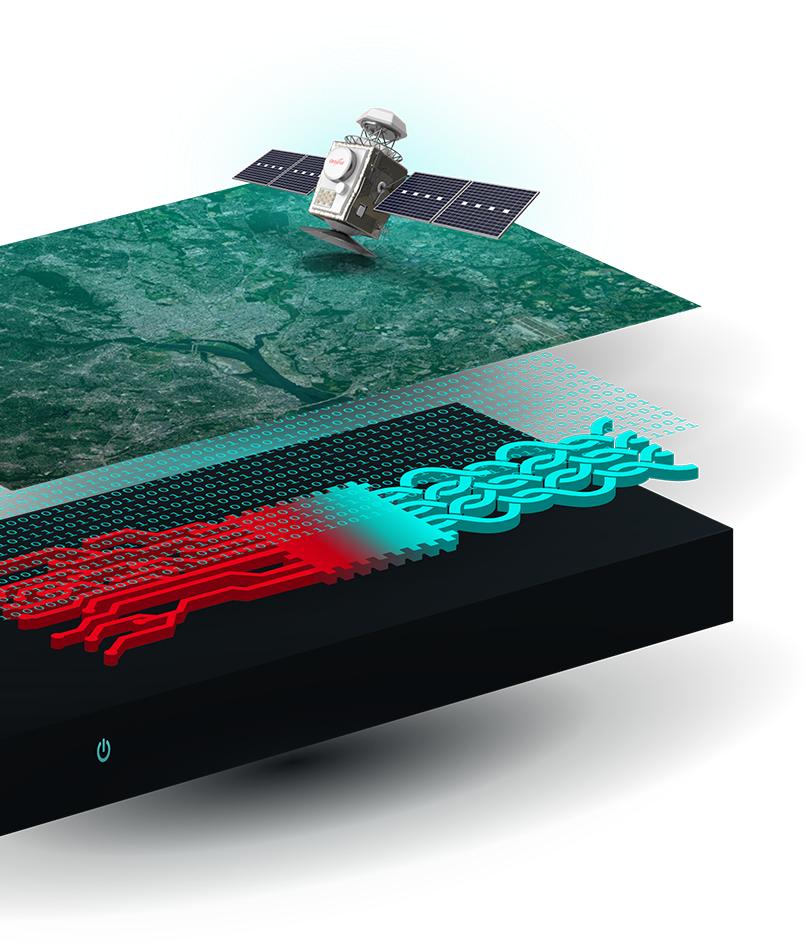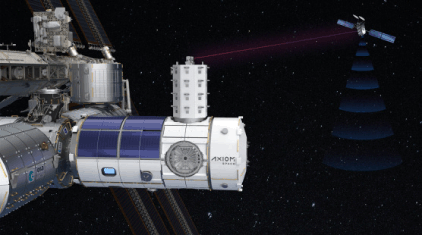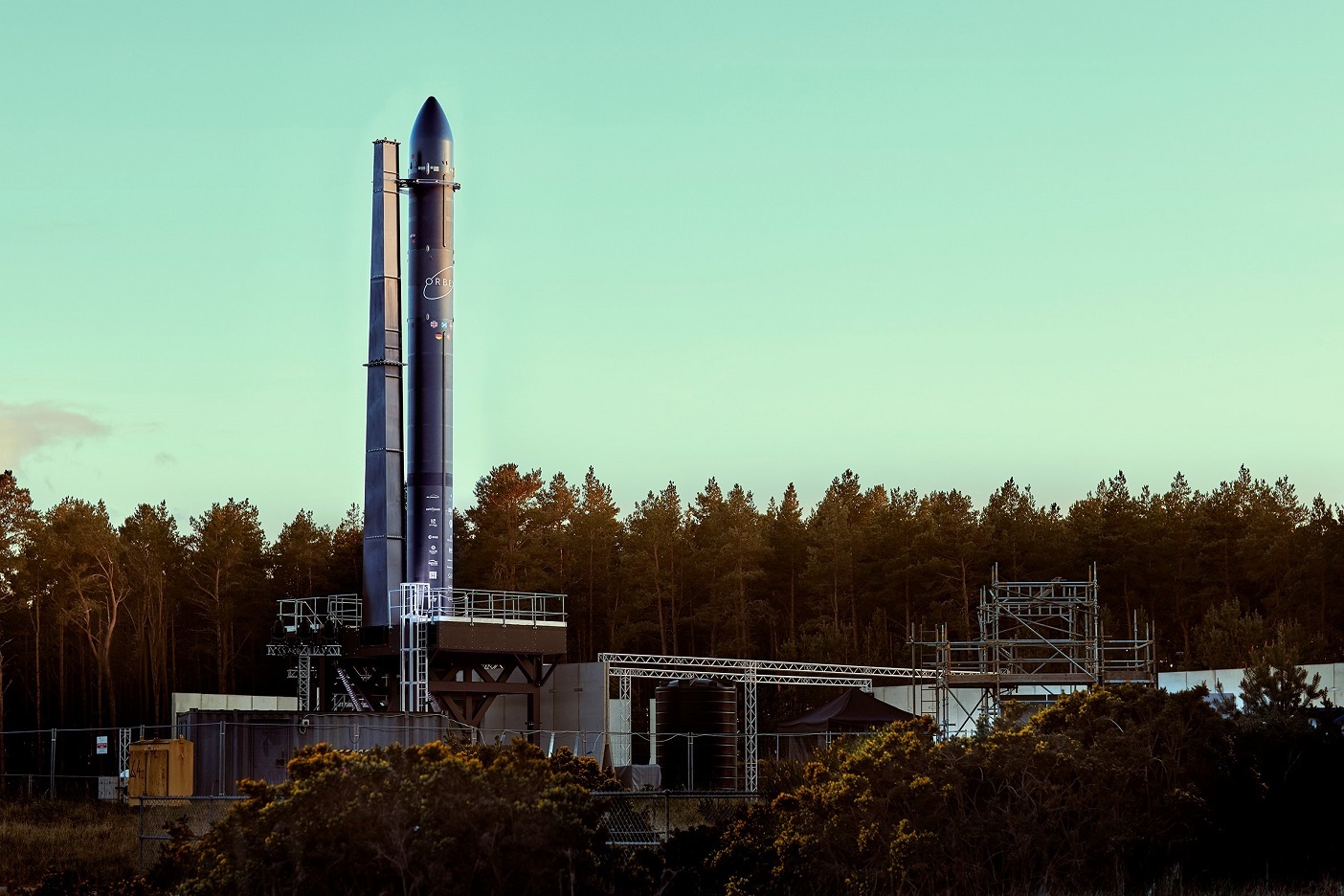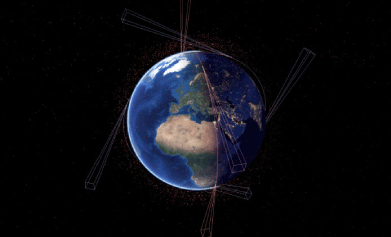Innovations in Satellite Technology
by Elisabeth Tweedie
Los Angeles, Calif. June 1, 2022--Our industry is known for innovation. Sometimes this comes from within, from well-established companies, and sometimes it comes from totally outside the industry, as Elon Musk did twenty years ago when he founded SpaceX. This makes trying to write a short article on innovation, all the more challenging, there is so much to choose from! So, I decided to focus on new entrants, but this still left very many interesting companies to choose from. In the end, I decided to limit myself to companies trying to solve a known problem, then rather arbitrarily selected four companies.
A company with a totally new method of securing communications, to eliminate, hacking and eavesdropping; a company aiming to improve the capabilities of future low earth orbit (LEO) systems and provide real-time communication for manned space missions; a company committed to carbon neutral launches, and lastly a company trying to help satellite operators avoid space debris.
Rampart Communications
Rampart Communications is one of the most interesting companies that I came across whilst I was doing the research for this article. Keith
 |
|
Rampart’s patented Unitary Braid Division Multiplexing (UBDM) modulation technology provides categorical security at the physical layer. UBDM is new science: secure-by-default, not security-as-an-afterthought. (image courtesy of Rampart Communications) |
Palmisano, the CTO said that the company had been described as “a baby with a mustache.” Which is actually a very apt description for a relatively new company, that has a well validated, unique yet ubiquitous product.
The company, was founded in 2016 by physicists, mathematicians, RF engineers, and computer scientists whose previous experience includes the US Department of Defense (DoD), the US Central Intelligence Agency (CIA) and the National Reconnaissance Office (NRO) amongst others. The primary product, for which it holds the patents, and the one that is the main focus of its current efforts, is Unitary Braid Division Multiplexing (UBDM). There are other equally revolutionary products in the pipeline. Essentially, UBDM is “wrap-around” technology; it provides the first “secure-by-default,” wireless modulation solution. UBDM can be deployed in any wireless network including satellite, WiFi and cellular. UBDM has been independently verified by MITRE which stated: “UBDM essentially removes vulnerabilities at the link layer,…and….is not vulnerable to any known cryptographic attacks.” A second endorsement came from Independent Security Evaluators, Inc. which stated:
“UBDM is resilient against know cryptographic and information theoretic attacks” and “significantly increases and expand the security over existing schemes, protecting both user and control data, and eliminating the attack surface of the wireless link.”
As wireless networks grow and edge computing becomes the norm, the attack surface of a network expands. Most of the security systems available today focus on protecting user data, and detecting attacks. These rely on the assumptions that it is possible to identify every single device, piece of data and activity in a network and that it is possible to know everything about every potential network threat. Neither of these assumptions is really valid. Rampart approached the issue from a different perspective. That of encapsulating and securing every single bit that is transmitted at the Physical layer. In military terms it is the next generation of COMSEC and TRANSEC. There is no way that unintended recipients can listen in to or interfere with the traffic. With UBDM increasing the size or location of a network doesn’t increase risk. Most importantly for the user, UBDM doesn’t degrade network performance, nor does it add to the operating complexity. Because it works at the physical layer, it is compatible with all modulation techniques and wireless protocols.
UBDM will work with all wireless networks but the initial focus is on satellite and government and military. Satellite footprints stretch over large geographic areas and so have a large attack surface. UBDM will protect that entire surface regardless of whether it is static or moving. Had Viasat being using the technology, it would have been impossible for Russia to interrupt service as happened earlier this year. The technology is also ideal for launch and manned spaceflight communications. For satellite one of the key advantages is that the software requires far less power consumption than current link encryption. “Increased reliability without increasing complexity, increased security without limiting performance,” to quote Palmisano. It also removes the threat of command link injection.
Rampart has not yet announced any customers in the satellite industry, but it is working with Lockheed Martin to prototype next generation U.S. Marine Corps 5G communications.
SpaceLink
SpaceLink, winner of the 2022 MSUA Chairman’s Award for Outstanding Innovation, is in business to improve the efficacy of new LEO constellations, and other missions requiring real-time communications, whether those be manned space flights or unmanned military missions. The company, which is owned by the Australian company Electro Optical Systems (EOS) was granted the rights to 21 GHz of space-to-ground and space-to-space spectrum, previously owned by Audacy, by the FCC. The caveat being that the spectrum has to be brought into use by June 2024.
 |
| In February this year, SpaceLink named Axiom Space as its Implementation Partner for demonstration of its end-to-end communications relay service on the International Space Station. (image courtesy of Spacelink) |
The business model is based on the premise that transferring data from a LEO to the ground is an ever-increasing challenge. There are several reasons for this: firstly, as LEOs pass their ground stations, there is a limited amount of time in which to transfer data, secondly the elapsed time between the data being uplinked and the satellite passing over a suitable ground station, adds more latency into the equation. Also, the sheer numbers of LEOs being launched means that the spectrum is becoming congested, and as yet no one has come up with a proven way of cramming more bits into a hertz, so adding-in another challenge for new entrants.
SpaceLink plans to launch four Medium Earth Orbit (MEO) communication relay satellites, with both optical and RF communication links. In order to use the service, the LEO operator will have to install an optical transmitter on its satellites. This will then be used to relay the data to Spacelink, which will then either downlink it directly, or optically transfer the data to another relay satellite for downlink to one of its three ground stations. The downlink uses RF so as to achieve 99.9% availability. Using the Q and V-Band spectrum means that the data is downlinked at rates up to 40Gbps. For the LEO operator, data can be instantly transferred to Spacelink, as one the satellites will always be in sight, using optical links means the data will be transferred at rates up to 10 Gbps. Another major advantage for a new LEO operator, is that using SpaceLink to downlink data, eliminates the need to establish multiple ground stations.
The original plan was to have OHB build the four satellites. Following a design review which modified the original design and added to the build time, it was decided to start initially with smaller satellites to ensure that the FCC operational deadline could easily be met. The contract for these satellites has not yet been awarded, but an announcement is expected very soon. The new plan, is that the first constellation of smallsats will launch in 2024, followed by a second constellation of smallsats in 2026. The original larger OHB satellites are planned for 2028 and by 2030 Spacelink expects to have a 10Tbps orbiting optical cloud.
SpaceLink has been selected by Center for the Advancement of Science in Space (CASIS), manager of the International Space Station U.S. National Laboratory, for a funded demonstration of its end-to-end relay service to provide secure, continuous, high capacity communications between spacecraft and the ground. The demonstration will validate the use of a 10 Gigabit per second optical terminal, for real-time voice, video, and data exchange between ISS crew, onboard systems, experiments, and terrestrial users. The Spacelink relay network is designed to pick up where the NASA Tracking and Data Relay Satellite System (TDRSS) leaves off.
“Our demonstration on the ISS is the first step to proving SpaceLink’s capabilities to advance space science and the emerging space economy,” said David Bettinger, SpaceLink CEO. “Support from CASIS marks an important milestone in SpaceLink’s roadmap to providing massive bandwidth for organizations that need real-time connectivity between space and the ground” he added.
Orbex
An innovative approach to launches is being taken by Orbex, a British company founded in 2015. What makes Orbex unique is that the rocket, named Prime, will be powered by biofuel. The rocket is 19 meters long with seven engines in total for its two stages. It is being made in the UK and Denmark. Six of the engines will take the rocket to the first stage, which is at an altitude of about 80 kilometers. The seventh engine will take the rocket to a low earth orbit for the release of satellites. The engines are 3-D printed and the rocket is designed with built-in reusability, with an innovative low mass recovery and re-flight system, leaving no orbital debris.
Using a renewable, bio-propane fuel cuts carbon emissions by 90% compared to traditional hydrocarbon fuel. Josef Aschbacher, director
 |
| Orbex unveiled the first full-scale prototype of the Prime orbital space rocket on its dedicated launch pad in Scotland on May 11, 2022. Prime is a 19-metre long, two-stage rocket that is powered by seven engines, that is being designed and manufactured in the UK and Denmark. The six rocket engines on the first stage of the rocket will propel the vehicle through the atmosphere to an altitude of around 80km. The single engine on the second stage of the rocket will complete the journey to Low Earth Orbit (LEO), allowing the release of its payload of small, commercial satellites into Earth's orbit. (image courtesy of Orbex) |
general at the European Space Agency, said: “I am deeply impressed with the speed at which the Orbex Prime rocket was developed…and I am equally impressed by the low carbon footprint technology applied. My sincere congratulations to the whole Orbex team for this impressive achievement.”
Prime will launch from Space Hub Sutherland, the first vertical launch site in the UK and according to Orbex the only spaceport in the world that has committed to being carbon neutral. However, the initial assembly for testing the first integration of a full scale Orbex prototype launch vehicle has just been completed on a launch pad at Kinloss, Scotland near the company’s headquarters.
The target market is the small satellite industry. Prime will be able to launch payloads with a mass of 10-180 kilograms in various configurations, ranging from small 5 centimeter PocketQubes to 16U standard cubesats measuring 10 centimeters on each side. Prime’s first launch will be an experimental satellite to LEO for Surrey Satellite Technologies, it also has six other commercial launches booked for earth observation and communications satellites.
Although a relatively new company, Orbex staff have backgrounds with NASA, ESA and other commercial spaceflight organizations. Collectively, the staff have developed more than 50 rocket engines and launch vehicles including Ariane 5 and 6. Equipment developed by team members has flown on more than 50 deep space missions.
To date the company has raised £38 Million (US$46.4 Million at current exchange rates) from a variety of public and private sources, including investment banks and the UK Space Authority (UKSA).
Vyoma
 |
| One of the newest entrants to the field is Vyoma, a German company founded with the help of the Technical University of Munich (TUM). Vyoma’s goal is to track objects in low Earth orbit (LEO) using a constellation of observation satellites, then use machine learning to automate collision avoidance procedures for clients’ satellites. (image by Vyoma) |
No article on innovative companies would be complete without mention the winner of this year’s Startup Space Competition, Vyoma. Based in Germany, Vyoma aims to ensure the safety of satellites in space. As discussed in my article in this magazine last June 2021 on “State of the art: On-Orbit Services” space debris is a very real and rapidly increasing problem. Vyoma is a space debris monitoring and tracking company. Currently service is provided from the ground using a partner network of ground sensors. It is planned to launch two demo satellites that will carry cameras to track debris from space, by the end of 2023. Tracking debris from space has significant advantages over tracking from the ground. Firstly, objects can be observed up to 30 times a day, making tracking far more reliable, and facilitating very accurate predictions of the trajectories of debris objects. Secondly, smaller objects, down to one centimeter, can be observed. Currently only larger objects are tracked, but even really small pieces of debris can cause significant damage. The goal is to track individual pieces of debris from a constellation of observational satellites, and use machine learning to automate collision avoidance procedures for client’s satellites.
Vyoma will locate pieces of debris by combining two sensor systems. On-board cameras observe objects illuminated by the sun, and determine their position relative to Vyoma’s satellites using the stars. When this information is coupled with information from the on-board global navigation satellite system (GNSS) receivers on Vyoma’s own satellites, it is possible to precisely locate the debris and determine its characteristics and trajectory.
Combining all this data, Vyoma aims to provide satellite operators debris cataloguing and collision warnings, and ultimately full automation services planning and performing evasive maneuvers.
Vyoma closed pre-seed and seed rounds (of undisclosed sizes) in 2021, kicking off the production of its space cameras. As well as winning the Startup Space Competition this year, It has also won the German NewSpace Award and the Weconomy award, and been inducted into the Gallileo Masters Hall of Fame in the last few years.
Four companies: Rampart Communications, Spacelink, Orbex and Vyoma. Four countries: America, Australia, the UK and Germany and four very different innovative ideas. What do they all have in common? They are all companies and technologies worth keeping an eye on.
--------------------------------------------
 Elisabeth Tweedie has over 20 years experience at the cutting edge of new communications entertainment technologies. She is the founder and President of Definitive Direction (www.definitivedirection.com), a consultancy that focuses on researching and evaluating the long-term potential for new ventures, initiating their development, and identifying and developing appropriate alliances. During her 10 years at Hughes Electronics, she worked on every acquisition and new business that the company considered during her time there. She can be reached at etweedie@definitivedirection.com
Elisabeth Tweedie has over 20 years experience at the cutting edge of new communications entertainment technologies. She is the founder and President of Definitive Direction (www.definitivedirection.com), a consultancy that focuses on researching and evaluating the long-term potential for new ventures, initiating their development, and identifying and developing appropriate alliances. During her 10 years at Hughes Electronics, she worked on every acquisition and new business that the company considered during her time there. She can be reached at etweedie@definitivedirection.com





